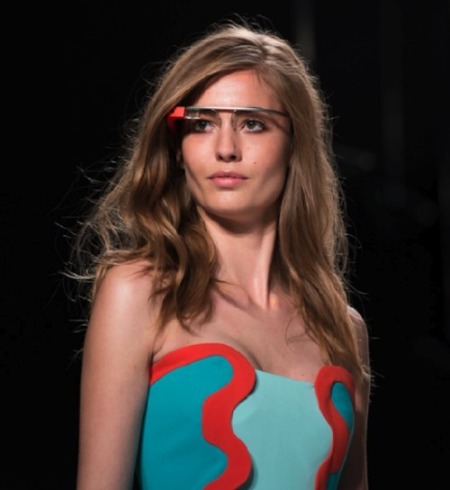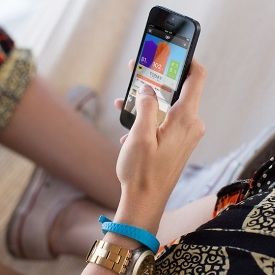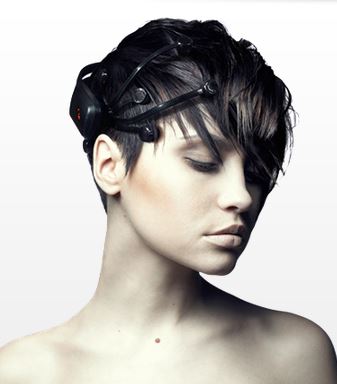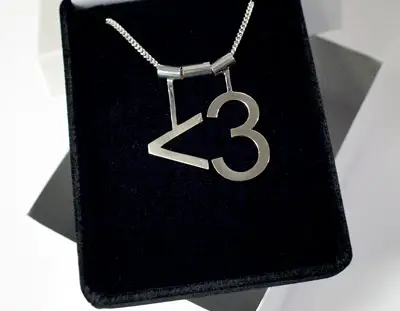We’ve come a long way since the calculator watch of the 80’s, but the road to consumer accepted wearable tech has been anything but smooth. Nowhere is this more real than in female fashion. Becky Stern, director of wearables at Adafruit, highlighted this problem over the weekend in her talk with Engadget at their event in NYC. “Getting people to want to wear things all the time—whether it’s on or off [has been] a huge stumbling block.”
The issue in general seems to be in making the technology either pervasive enough to not be noticed OR fashionable enough to make a statement, all the while being highly functional. It’s a problem that Sonny Vu, CEO of Misfit Wearables, calls the issue of “gorgeous or invisible.” However, with the emergence of newer technologies that lower the cost of production and minimize their actual size, wearable technology is picking up traction. According to Businessweek, “the advent of miniature, low-cost sensors and LED modules has set off a race among tech giants and startups to deliver wearable products that can track where you are, what you’re seeing, and how you’re feeling.”
While these technologies are most prominent in fitness and performance—think Nike+ and Up by Jawbone—companies are designing products with a more fashion-conscious consumer in mind. Even Googleglass sought to gain a broader audience when it made its way onto the runway back in September 2012 at Diane von Furstenberg’s show during Fashionweek.
Although tech giant Intel (INTC) predicts that most people will eventually wear multiple items containing sensors and computers embedded into them, developers still face a major hurdle in wearable acceptance—making the technology seamless enough to become a habit. Here are a few companies that are attempting to do just that and are on the cutting edge of wearable technology:
- Misfit is taking an aesthetic approach to fitness tracking. They have downsized their technology to about the size of a quarter and have addressed the issue of women who do not want to wear technology on their wrist. Instead, they can opt for one of SHINE’s pendants. The technology is waterproof and can last four months on a single battery. One of the downside’s is that the device currently is only compatible with iOS.
- Emotiv is a neuroengineering company that is transforming the way humans and computers interact by allowing computers to react to individuals’ moods and commands in a more natural way. They have developed mindreading wearable headpieces that are consumer friendly and fashion forward. It records the electrical activity along the scalp to detect subconscious emotional states and facial expressions in order to control custom applications and games. Developers are currently utilizing Emotiv EPOC technology in a variety of new and exciting ways: artistic expression, gaming, virtual reality, and for market research. While the possibilities are endless, such a headpiece may be slow to be adopted by people in general, let alone women.
- Heapsylon is bringing practical and fashionable to the fitness tracking side of wearables. They have created sports bras and t-shirts that are not only functional, but also washable.
- Memi is a device that is designed with women in mind. If the idea of the Pebble smartwatch is interesting, but too masculine or “techie,” then Memi is for you. It’s a smartbracelet that allows you to “unplug just enough” to keep your phone away, and still receive notifications and messages. Memi is developed around notifications,
unlike fitness counterparts such as Jawbone, but with sleek design in mind.
- Adafruit is a go to place for open source tech. Founded in 2005 by MIT engineer, Limor “Ladyada” Fried, the company has expanded offerings to wearable technology. One of the pieces that can be found on the site are the iNecklace which is an aesthetically pleasing, machined aluminum pendant with a subtle pulsating LED. Conductive threads and sewable batteries are among the many open source DIY technologies offered by Adafruit for ladies wishing to create their own!
These wearables are ‘made for women who celebrate art, science, engineering and great design.’
One final notable mention, is Studio Roosegaarde, which is a company that is focusing less on functionality and more on high fashion. They have created a dress appropriately called, “Intimately,” due to its ability to sense a woman’s heartbeat when she is aroused. Once it picks up on this emotion, the dress turns translucent. Though it’s not for the faint of heart, it provides an interesting take on the path to wearable tech.
As with most new developments, these technologies have their drawbacks, as well. However, these companies are paving the way for the future manufacturing of everyday wearable technologies. And as Forbes’, Cecilia Brown puts it, “the products with the right mix of ‘geek’ and ‘chic’ will emerge as the big winners in the wearable market.”
Check here to keep up to date on innovative approaches to wearable tech.















